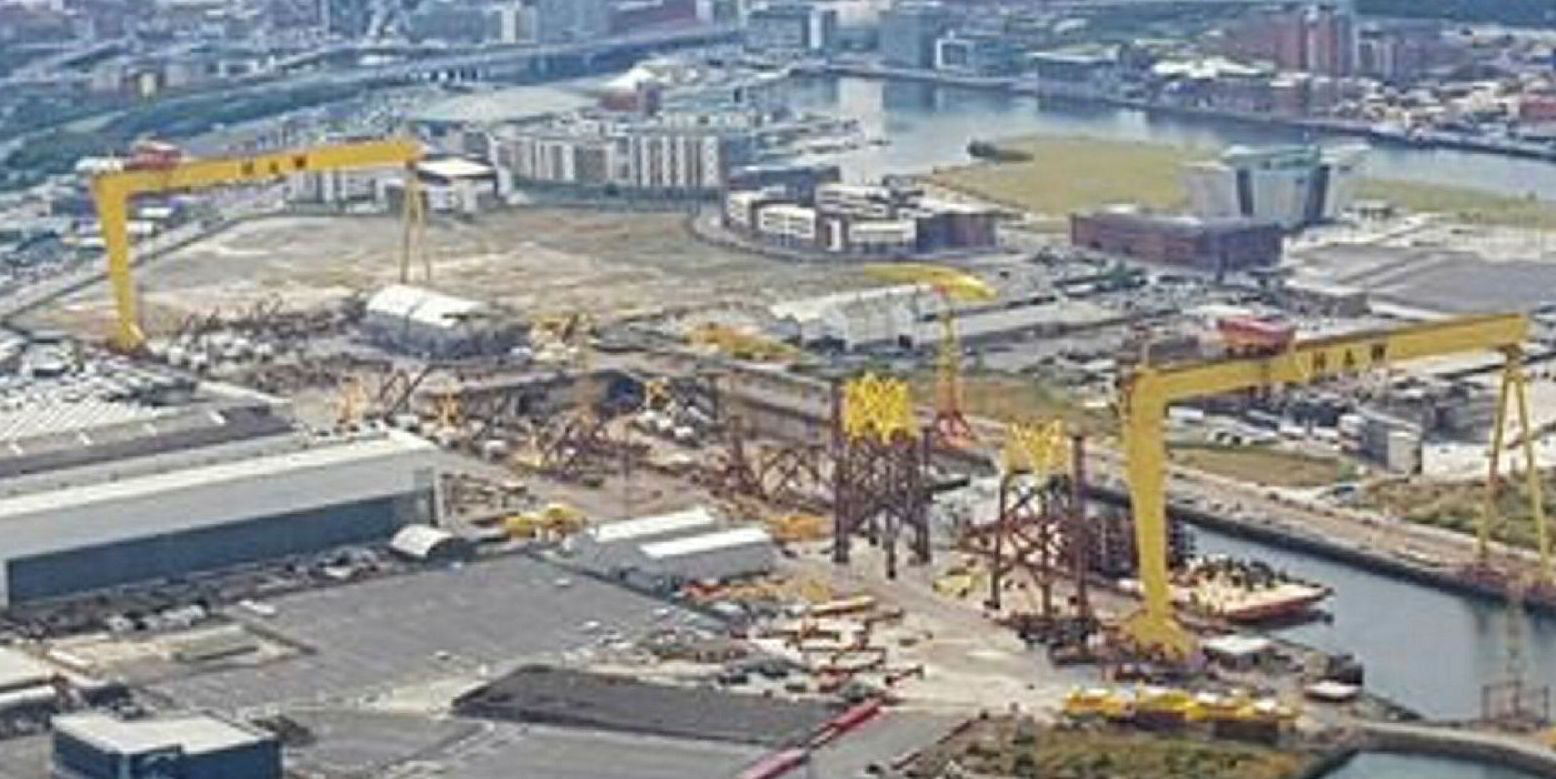Last-ditch efforts are under way to save the historic Harland & Wolff (H&W) shipyard in Northern Ireland before it falls into the hands of administrators.
An emergency meeting of Belfast City Council this afternoon passed a motion calling on the UK government to provide interim funding so the yard can seek ways to remain in operation.
The council will also convene an "urgent forum" between the relevant trades unions, Invest Northern Ireland, the Department for the Economy and the UK government, including examining the possibility that the site could be transformed into a "hub for the creation of green energy."
The council is to seek a meeting immediately with the Secretary of State for Northern reland.
It is reported that administrators are set to move into H&W on Monday.
The yard, best known for building the ill-fated liner Titanic, was put up for sale around six months ago by Norway’s Dolphin Drilling, the former Fred Olsen Energy.
Earlier this week, yard workers took their Save Our Shipyard campaign to Stormont, the Northern Ireland parliament buildings, during the first official visit to the region of the new UK prime minister Boris Johnson.
They handed in a letter urging Johnson to renationalise H&W, which was founded 158 years ago.
Fred Olsen stepped in to save the yard from almost certain closure some 30 years ago after it had been nationalised 22 years earlier.
For a period, H&W specialised in building suezmax tankers but with competition from the Far East intensifying it moved increasingly into the offshore oil and gas industry.
H&W sought to revive its skills building passengerships but was unsuccessful in tendering for the 2,691-passenger Cunard flagship Queen Mary 2 (built 2004).
It completed successfully, however, the four-month refurbishment of P&O Cruises’ 30,300-gt Adonia (built 2001) last year for rebranding into Azamara Cruises’ Azamara Pursuit.
More recently, H&W has concentrated especially on projects involving renewable energy, including offshore wind turbine and tidal power construction.
Also, ship maintenance and repair where among its main clients is ferry operator Stena Line.
In June of last year, however, majority owner Dolphin Drilling announced it would file for bankruptcy and restructure after failing to reach agreement with creditors.A majority shareholder stepped in to form a new operating company for Dolphin’s fleet of rigs and drillships.
H&W was put up for sale in a bid to raise capital.
Talks were held with various parties but a preferred bidder pulled out recently and the yard was left reportedly without sufficient funds to continue. It currently employs around 130 workers compared with 30,000 at its peak during World War 11.Anothe r 2,000-3,000 jobs are currently said to depend on H&W's survival.
Turon Miah, principal associate at international law firm Gowling WLG, told TradeWinds that calls to renationalise H&W are unlikely to be heeded.
Politicians in London and Belfast face far more and wide ranging economic issues arising from Brexit and the potential return of a hard border in the island of Ireland, he said.
“The yard’s shipbuilding days seem to have past but its move into wind energy and marine engineering projects could mean there is a future for the yard with the right investment and vision,” said Miah.
A moratorium afforded by administration may see such avenues explored.
“The yard has a highly skilled workforce and in the dash for green energy it could position itself to capitalise on that,” said Miah.




